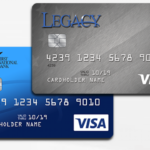With so many alternatives, it can be pretty challenging to choose a career path that is ideal for you. In any case, if you don’t know what you need to do, the task of choosing a career might appear to be unconquerable. Luckily, it isn’t. If you follow a collaborative process, you will expand your odds of settling on a decent choice.
Let’s look at a few ways that can help you decide which career path to pursue.
1. Assess Yourself
Before you pick your true calling, you should find out what is it that you actually want to do. Your qualities, interests, delicate abilities, skills and talents, and aptitudes mix with your character type and make a few professions a solid match for yourself. At the same time, keep eliminating the rest that you think are not right for you.
2. List all Career Path Options
You presumably have various types of occupations before you now—one produced by every one of the self-evaluation devices you used. To keep yourself coordinated, you should join them into one long rundown.
3. Explore the Occupations
At this point, you’ve probably decided on which career to settle for, keeping all the data you’ve gathered in mind. In addition, you can get some more data about every one of the occupations on your rundown through further research.
4. Shorten Your Career Path List
Since you now have more information about these professions, you shall begin to limit your options further. In retrospect of what you’ve figured out about your potential career, at this point, stop looking into those professions you wouldn’t want to know more about. You should be left with three to six fields on your “short rundown.”
5. Lead Informational Interviews
At the point when you have a couple of occupations left on your rundown, begin accomplishing more thorough exploration. Orchestrate to meet with individuals who work in the professions in which intrigue you. They can give firsthand information about the job type on your short rundown. Access your current institute, including LinkedIn, to discover individuals with whom to have these educational meetings.
6. Settle on Your Career Path
At last, in the wake of doing all your examinations, you are most likely prepared to settle on your decision. Pick the occupation you think will present the most fulfillment, dependent on all the accumulated data.
7. Have Your Aims in Life Figured Out
When you reach a decision, identify your long term and momentary objectives. This assists with diagramming a course toward, in the long run, landing work in your chosen field. Long term objectives regularly take around three to five years to reach, while you can, for the most part, satisfy a short objective in a half year to three years.
8. Have a Career Path Plan
After you’re done with all of your research, and when you finally start your career, you need to do one thing – create a career action plan. It’s a simple guide that will state all of your long term and short-term goals and objectives. The plan shall remind you of your motivations and future plans. Additionally, it will also help you in achieving smaller milestones that eventually lead to bigger accomplishments.


































































